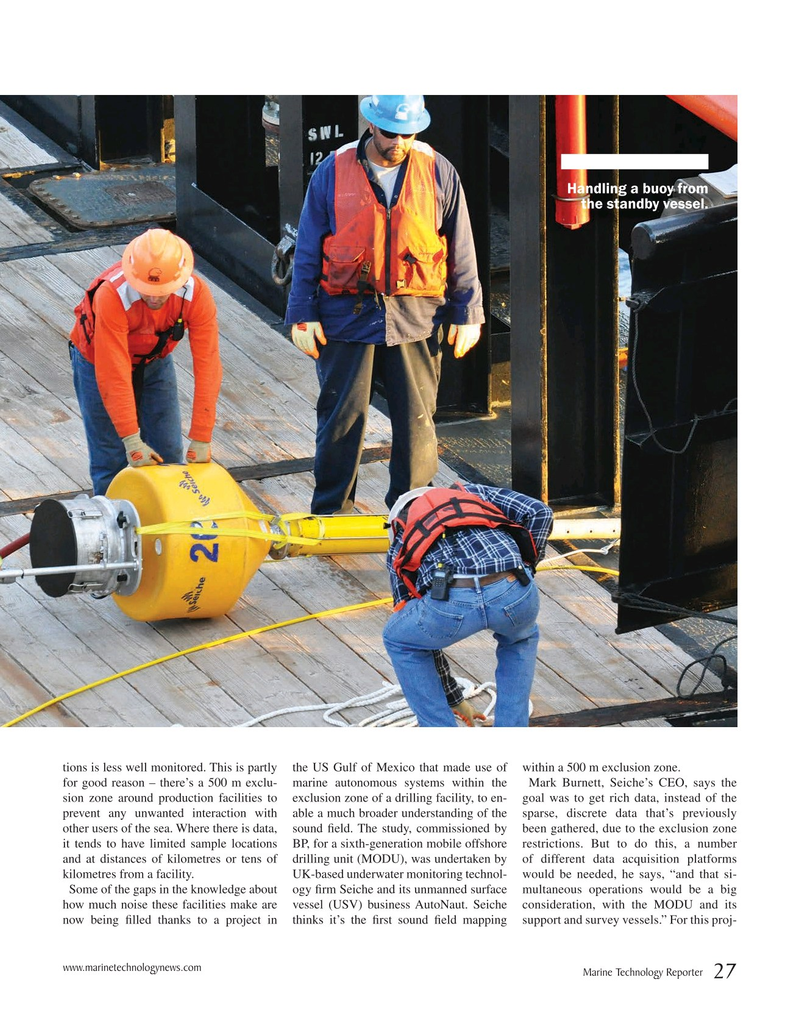
Page 27: of Marine Technology Magazine (April 2020)
Read this page in Pdf, Flash or Html5 edition of April 2020 Marine Technology Magazine
Handling a buoy from the standby vessel. tions is less well monitored. This is partly the US Gulf of Mexico that made use of within a 500 m exclusion zone.
for good reason – there’s a 500 m exclu- marine autonomous systems within the Mark Burnett, Seiche’s CEO, says the sion zone around production facilities to exclusion zone of a drilling facility, to en- goal was to get rich data, instead of the prevent any unwanted interaction with able a much broader understanding of the sparse, discrete data that’s previously other users of the sea. Where there is data, sound feld. The study, commissioned by been gathered, due to the exclusion zone it tends to have limited sample locations BP, for a sixth-generation mobile offshore restrictions. But to do this, a number and at distances of kilometres or tens of drilling unit (MODU), was undertaken by of different data acquisition platforms kilometres from a facility. UK-based underwater monitoring technol- would be needed, he says, “and that si-
Some of the gaps in the knowledge about ogy frm Seiche and its unmanned surface multaneous operations would be a big how much noise these facilities make are vessel (USV) business AutoNaut. Seiche consideration, with the MODU and its now being flled thanks to a project in thinks it’s the frst sound feld mapping support and survey vessels.” For this proj- www.marinetechnologynews.com
Marine Technology Reporter 27

 26
26

 28
28
